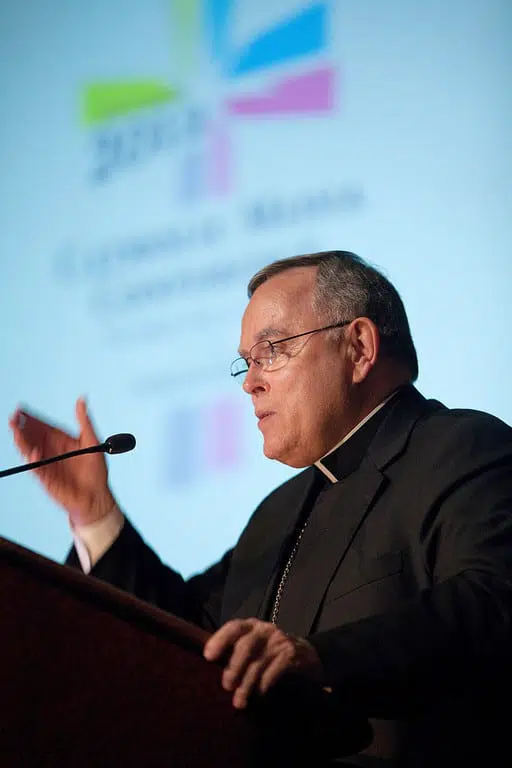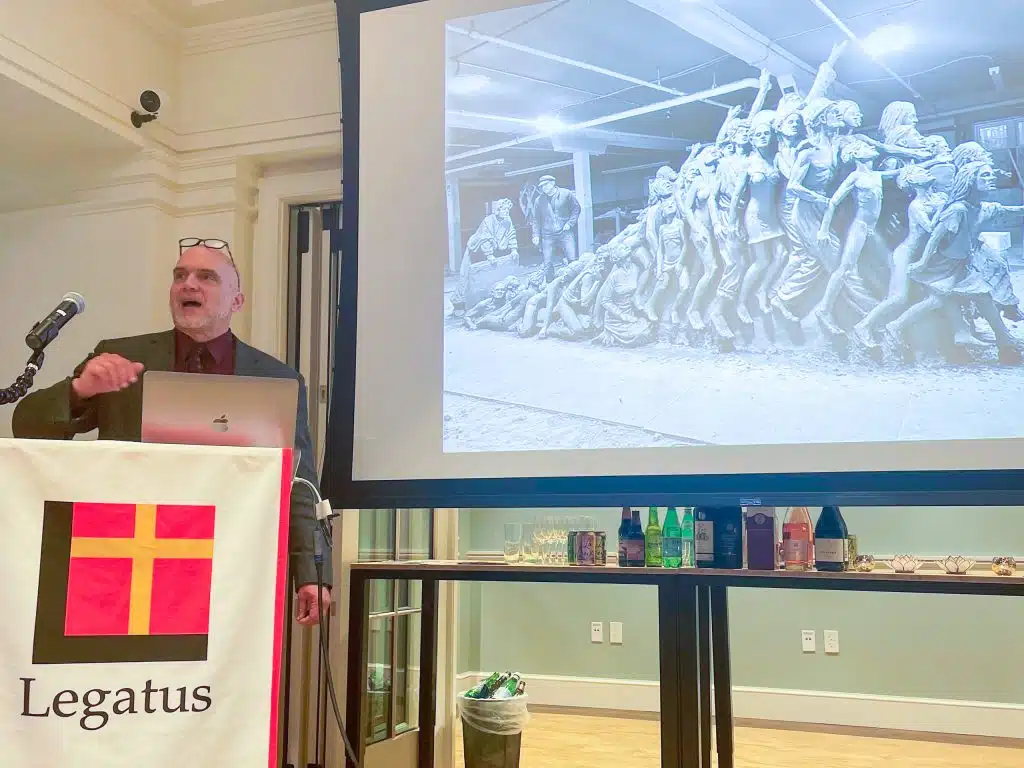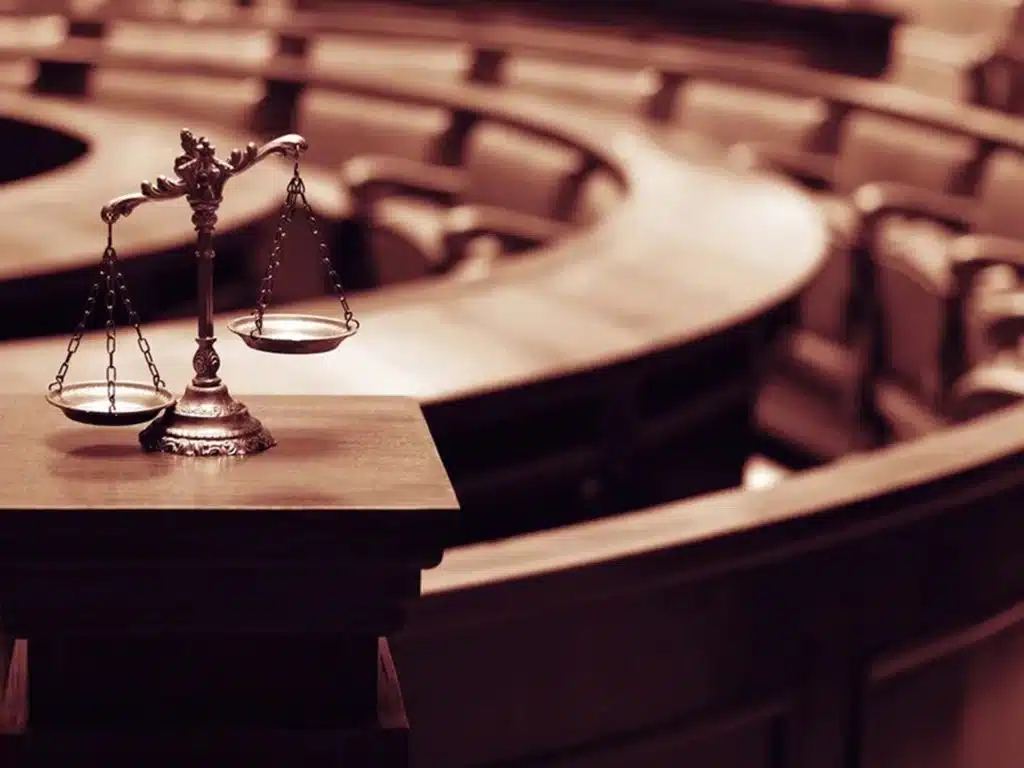PHILADELPHIA – Philadelphia’s 17 archdiocesan high schools and its four schools for special education are officially under new management.
Under a historic agreement in principle signed by Philadelphia Archbishop Charles J. Chaput and H. Edward Hanway for the Faith in the Future Foundation Aug. 21, strategic and operational control of the 21 schools passes to the foundation effective Sept. 1.
It is believed to be the first time a diocese has given control of a major part of its schools to an independent and essentially lay board.
The announcement and signing took place at a press briefing at St. Hubert High School, which was one of the four high schools recommended for closing in the 2011 report of the Blue Ribbon Commission on Catholic Education, but spared by Archbishop Chaput last February.
Archbishop Chaput said in a statement that the agreement between the archdiocese and foundation “is unlike any agreement that a diocese has achieved with its lay leadership.”
“The willingness of lay leaders with a love for Catholic education to step forward is encouraging. The commitment made by the foundation – a commitment to professional excellence in management, guided by a strong and faithful identity – will serve our high schools and schools of special education well,” the archbishop said.
“We have seen the momentum that the foundation has been able to generate and we are confident that this agreement will lead to an even stronger school system for the children of the Philadelphia region,” he added.
Under the agreement, which initially is for five years, the archdiocesan Office for Catholic Education, which previously oversaw the schools, will become a division of the Faith in the Future Foundation, reporting directly to the foundation’s CEO.
Hanway, a former chairman and CEO of Cigna Corp, will temporarily fill the post until a CEO is hired.
The Office for Catholic Education will continue to focus on curriculum and standards; academic and spiritual development of students; co-curricular and extracurricular programming; and professional development of teachers.
The presidents and principals of the schools affected by the agreement will continue to report to the education office, and the teachers remain employees of the archdiocese.
Direct ownership of the schools themselves will remain with the archdiocese, with the exception of Roman Catholic, Philadelphia’s flagship Catholic high school. The school is operated by the archdiocese but the building owned by the Cahill Trust, established under the will of Roman founder Thomas Cahill, who died in 1878.
While the makeup of the foundation board has not yet been set, and will not be announced until the fall, Hanway estimated it will have about 15 members, with the archbishop appointing only one-third of them.
Philadelphia Auxiliary Bishop Michael J. Fitzgerald, who oversees Catholic education for the archdiocese, will be a board member.
“The independence of the Catholic secondary system, with the schools of special education, was critical to our ability to more fully address the fundraising and enrollment needs of our schools,” Hanway said. “With capacity available to educate an additional 15,000 students we intend to grow.”
He called it “a groundbreaking approach to educating our children” and praised Archbishop Chaput and other archdiocesan leaders for being “willing to make such a bold decision in reaching this agreement with the foundation.”
“I am confident that the foundation can and will serve as a model for Catholic education across the nation as we infuse and employ an entrepreneurial approach to managing these 21 schools,” Hanway said.
In Washington, Karen Ristau, president of the National Catholic Educational Association, said the only thing she could think of that comes close to the Philadelphia situation is that of public school districts turning over some of their poor-performing schools to an education management company.
“There’s almost no way” to predict whether the plan will succeed, Ristau said, adding she doesn’t know how many other dioceses would emulate the Philadelphia plan, “but I’m sure everyone will be watching. “I am sure the archbishop weighed the pros and cons in the decision, but for the rest of us, it will be really interesting to see how this goes,” she said.
John Eriksen, director of the schools program for the National Leadership Roundtable on Church Management, told Catholic News Service that entering into such an arrangement required “courage and humility.”
Eriksen said that, until he took his new job in July, he had been superintendent of schools for the Diocese of Paterson, N.J., which had a similar arrangement. “We saw some significant short-term gains. We saw some short-term pain as well,” he noted, but “over time, it has worked better and better.”
He said dioceses are trending to the model used by the Archdiocese of Philadelphia. “You talk about functionality, you talk about Catholic colleges and universities, which are some of the highest-functioning temporal entities within the church,” Eriksen added. “Now K through 12 is starting to catch up.”
NCEA’s Ristau told CNS that it’s possible that the Philadelphia plan repeated elsewhere could put the brakes on the ongoing decline in the number Catholic schools and students nationwide.
“We know that the decline has slowed down, and I think we’re going to see a flattening and then a turnaround,” she said. “The rate of closure for schools has really slowed down. We have dioceses that actually went up last year.”
In Philadelphia, Hanway reported registration for the fall class of freshmen in the archdiocese is now at 106 percent of earlier projections.
Whether that is because of the initial efforts of the Faith in the Future Foundation or the publicity surrounding the near-closing of four high schools might be impossible to say.
Registration at 11 of the 17 schools is over projection. At three schools, the incoming freshman class will be the largest in the school.
St. Hubert’s was chosen as the venue for the press briefing, because of the success of its fundraising campaign, which relied mostly on small donors and community support.
Although Hanway declined to put a figure on the expected deficit this year, he estimated it is half of the original estimate because of the increase in enrollment.
“I will say to you stabilizing enrollment is only a first step, the objective is to grow,” Hanway said.
A major part of the foundation’s work will be recruitment, development and fostering innovative programs.
“Our mission is to transform Catholic schools,” Hanway said. “Good enough isn’t enough. We must be excellent in every facet of our schools.”
While the current agreement focuses just on secondary and special education, both Archbishop Chaput and Hanway gave assurances the concerns of elementary schools will be part of the mission of the foundation.
Contributing to this story was Mark Pattison in Washington.



